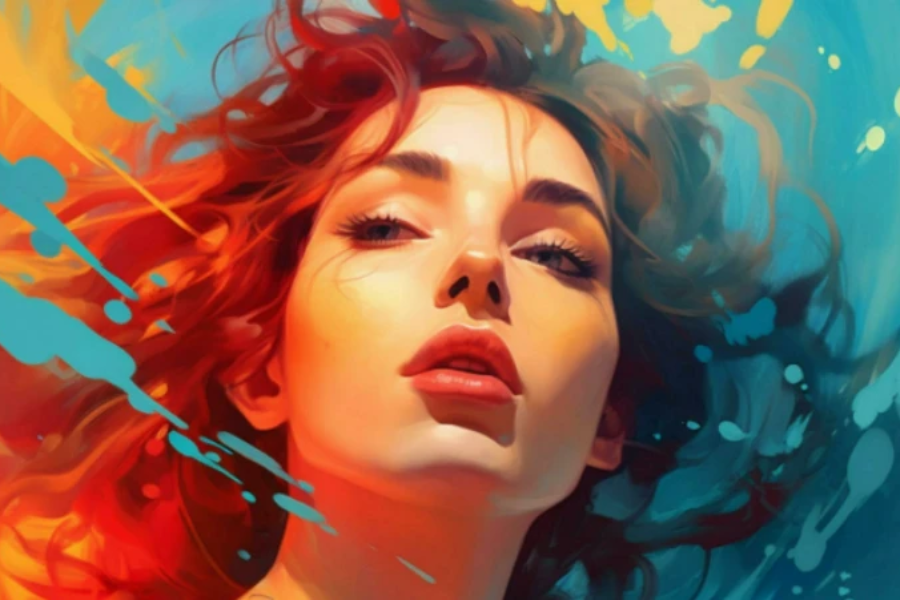Exploring Digital Art Ankinsart: Definition, Techniques, and Future Trends
Digital art has transformed over the years, combining creativity and technology in innovative ways. One of the intriguing developments in this realm is “Digital Art Ankinsart.” Whether you’re a seasoned artist, an enthusiast, or simply curious about digital art trends, exploring the world of Digital Art Ankinsart provides insight into the evolving landscape of digital creativity.
What is Digital Art Ankinsart?
Defining Ankinsart Digital Art Ankinsart is a unique subset within the digital art sphere, defined by its distinctive blend of artistic innovation and technological tools. Unlike traditional art forms that utilize physical media such as paint or clay, Ankinsart leverages digital platforms to create captivating and visually compelling artworks.
Key Features of Ankinsart Ankinsart is known for its variety of styles and a focus on innovation. Artists in this genre often explore digital painting, 3D modeling, and even interactive art installations. The emphasis on pushing the boundaries of what digital tools can achieve sets Ankinsart apart, resulting in a genre that encourages experimentation and creativity.
The Evolution of Ankinsart
Early Beginnings Digital Art Ankinsart has grown significantly since its inception. In the early days, artists were limited by the basic technology available, creating simplistic and often experimental works. These initial pieces were more a reflection of technological constraints than artistic limitations.
Technological Progress As technology evolved, so did the art. The progression of software, hardware, and digital tools has given artists greater freedom, complexity, and creative power. Modern Ankinsart now incorporates cutting-edge techniques, allowing for more sophisticated and expressive creations.
Influence of Online Platforms The rise of digital platforms has been instrumental in Ankinsart’s development. Artists can easily showcase their work to a global audience, receive real-time feedback, and engage in collaborative projects. This online connectivity has fostered the growth of new styles and techniques within the Ankinsart community, enhancing the evolution of this artistic movement.
Techniques and Tools in Ankinsart
Digital Painting A core technique within Ankinsart is digital painting, where artists use programs like Adobe Photoshop or Corel Painter to mimic traditional painting methods. This allows for a wide range of styles, textures, and effects that provide the artist with flexibility and creative control.
3D Modeling 3D modeling is another significant aspect of Ankinsart. Artists use software such as Blender or Autodesk Maya to build three-dimensional objects or scenes, adding depth and realism to their pieces. This technique is particularly prevalent in digital sculpture, animation, and virtual environments.
Interactive Installations One of the emerging trends in Ankinsart is the use of interactive installations, where digital art pieces respond to viewer interaction. These installations, often using sensors and projections, create immersive, dynamic experiences that blur the lines between art and technology.
Comparing Ankinsart with Other Art Forms
Traditional Art Forms Traditional art relies on physical materials like canvas and paint. While these forms are timeless, they lack the versatility of digital art. Ankinsart opens new avenues for creativity by allowing artists to explore techniques that are difficult or impossible to achieve with traditional materials.
Other Digital Art Forms While digital art is a broad category encompassing many styles, Ankinsart stands out due to its focus on innovation and pushing technological boundaries. Compared to other digital art forms, Ankinsart often explores new technologies and techniques, resulting in bold and experimental work that continually redefines the digital art space.
The Impact and Influence of Ankinsart
Influence on the Art World Digital Art Ankinsart has made a notable impact on the broader art world, inspiring new generations of artists to experiment with digital media. Its focus on creativity, technology, and innovation has led to groundbreaking works that expand the possibilities of artistic expression.
Influence Beyond Art Beyond its influence on the art world, Ankinsart has had a significant impact on industries such as advertising, entertainment, and design. The integration of artistic elements with digital technology has opened up new collaborative opportunities, enabling the creation of visually stunning media in a variety of fields.
Notable Artists and Examples
Key Contributors Several artists have made substantial contributions to the Ankinsart movement, each bringing their unique vision and technique to the genre:
- Artist 1: Known for pioneering digital painting techniques that revolutionized the genre.
- Artist 2: A master in 3D modeling and digital sculpture, pushing the boundaries of virtual art.
- Artist 3: Specializes in creating interactive installations that engage audiences in new and innovative ways.
These artists have helped shape the Ankinsart movement, driving its evolution and expanding its influence in both the art world and beyond.
Future Trends in Ankinsart
Emerging Technologies The future of Ankinsart is closely tied to emerging technologies such as augmented reality (AR) and virtual reality (VR). These advancements will enable artists to create even more immersive, interactive art experiences, breaking down barriers between the digital and physical worlds.
Collaboration Between Artists and Technologists Collaboration between artists and technologists is likely to increase as these fields continue to converge. By combining creative and technological expertise, artists will push the limits of what is possible in Ankinsart, developing groundbreaking works that merge art with cutting-edge technology.
Expanding Accessibility As digital tools become more accessible, the number of artists participating in the Ankinsart movement will continue to grow. Online platforms and digital communities are opening up opportunities for more people to explore and contribute to this genre, ensuring its continued evolution.
Conclusion
Digital Art Ankinsart represents a vibrant, ever-evolving form of artistic expression. With its foundation in technology, creativity, and experimentation, it offers endless possibilities for artistic exploration. As digital tools and technologies advance, Ankinsart is poised to continue pushing the boundaries of contemporary art.
By understanding the key techniques, evolution, and future trends of Ankinsart, we gain a deeper appreciation for this exciting genre. Whether you’re an artist, enthusiast, or someone with a keen interest in digital creativity, the world of Digital Art Ankinsart is a captivating and dynamic space filled with endless potential.
FAQs
Q: What software is commonly used in Ankinsart?
A: Artists typically use programs like Adobe Photoshop for digital painting and Blender or Autodesk Maya for 3D modeling.
Q: How does Ankinsart differ from traditional art?
A: Unlike traditional art, which uses physical materials like paint and canvas, Ankinsart relies on digital tools, allowing for more flexibility and experimentation.
Q: What are interactive installations in Ankinsart?
A: These are immersive art pieces that respond to viewer interaction using technology such as sensors or projections.
Q: What are the future trends in Ankinsart?
A: The future of Ankinsart is likely to include advancements in augmented reality (AR), virtual reality (VR), and greater collaboration between artists and technologists.
Stay in the know with the latest news and updates on blogranker.






